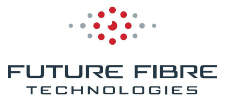
Following the enormous popularity of previous editions of the Boundaries of Security Report, the 2013 edition of this global resource for security industry professionals has been launched online.
The 109-page annual report was originally published in 2010 by designers and manufacturers of the world’s leading fiber-optic intrusion detection technologies, Future Fibre Technologies, and has become the ‘must-have’ resource for all forward-thinking security consultants and industry professionals.
Previous editions of Boundaries of Security received exceptional reviews from security experts, including Ian Bergman, government liaison manager at Dyesol Ltd, who said the report analyses complex and inter-related issues (technical, policy and human nature) in a very balanced and logical way, reflecting reality rather than hype.
"It touches on many subtleties in the area of perimeter protection, identifying strengths and weaknesses of the industries technologies very well in an obviously unbiased way," he said.
"Excellent information; one of the most concise papers I have read regarding perimeter security," says the National Security Manager for a leading global auto manufacturer.
The new 2013 edition has been updated to include emerging global industry trends, best practice recommendations for designing effective perimeter security systems for infrastructure and high value asset protection, as well as examining the important role signal processing plays in intrusion detection.
It also features clear explanations of the latest intrusion detection technologies including OTDR Fiber Optics, Fiber Bragg Grating sensors, and Ground Based Radar systems.
Also added are whitepapers explaining the importance and operation of Artificial Intelligence (AI) in processing raw alarm data to eliminate nuisance alarms, how to realistically measure and compare the performance of PIDS systems, and how to go about selecting a suitable perimeter intrusion detection technology, all in easy to understand terminology.

